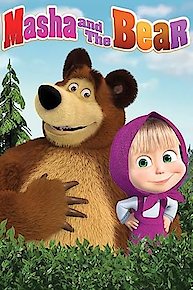
Rainbow Parade
Where to Watch Rainbow Parade

Rainbow Parade was not a television show from 1950 as you have suggested, but rather a series of animated technicolor short films produced by Van Beuren Studios in the 1930s. This series comprised 26 cartoons and was one of several attempts by Van Beuren to compete with other cartoon series of the era, such as Disney's Silly Symphonies and Warner Bros.' Merrie Melodies.
Each film in the Rainbow Parade series stands alone as a separate story, with few recurring characters, unlike later animated series or theatrical shorts that often featured the same characters in each episode. The films presented a wide range of animated tales, from adaptations of popular fairy tales and stories to wholly original creations. The series is noted for its vivid use of color, which was still relatively new to animation at the time, having only come into common usage in the late 1920s and early 1930s.
Van Beuren Studios previously produced the Aesop's Film Fables series and sought to improve upon that earlier work with Rainbow Parade by taking advantage of the richer storytelling possibilities afforded by technicolor. The studio invested in the quality of animation and enlisted the talent of experienced animators, some of whom had worked with other prestigious firms or would go on to have significant careers in the animation industry.
The animation style of Rainbow Parade is very much a product of its time. The characters are whimsically designed, with rubber hose limbs and exaggerated expressions, reminiscent of the broader animation style prevalent in the 1930s. Musically, the series stood out for its lively soundtracks which, true to the era, often featured jazz and big band influences, helping to bring the action on the screen to life.
Despite the innovation and the high production values of Rainbow Parade, Van Beuren Studios struggled to compete with its larger and more successful peers. The studio was ultimately not as successful at developing endearing characters that could match the popularity of competitors' iconic mascots. Nevertheless, the series remains a noteworthy entry in the history of early American animation for its artistic efforts and historical significance as part of the Golden Age of Animation.
While not as well remembered as other contemporaneous series, Rainbow Parade contributed its own unique charm and creativity to the medium. The technicolor shorts are a window into the artistic experimentation and development of narratives in animated films during the period. The variety of stories ranges from lighthearted comedic antics to moral lessons, employing a mix of fairy tale creatures, anthropomorphic animals, and occasionally human characters.
Rainbow Parade films typically offer a mixture of whimsy and adventure, and while some include dialogue, others rely solely on visual storytelling and musical cues. The series showcased an array of thematic elements, some drawing upon classic children's literature and folklore, others presenting more contemporary and original content. The plots often revolved around simple conflicts or journeys, featuring protagonists who had to overcome various obstacles, frequently underscored by comic relief.
Although today Van Beuren Studios and Rainbow Parade often occupy only a footnote in the history of animation, their works can be appreciated for their historical value and their role in the evolution of the medium. Some of the stories told through Rainbow Parade were precursors to later, more famous interpretations of similar tales by other studios.
While full appreciation of Rainbow Parade must acknowledge the context of its time, which includes dealing with outdated cultural depictions that modern audiences may find inappropriate or offensive, these films also offer an opportunity to appreciate the technical prowess and storytelling zeal of early animated productions. The Rainbow Parade series is a testament to an eager spirit of creativity and to the cinematic storytelling that animation made possible in an era when the medium was still discovering its potential.
For those interested in the history of animation, or fans of vintage cartoons, Rainbow Parade presents an opportunity to dive into the richness of 1930s animated film. These shorts provide an enchanting retrospective of the flourishing art form, before television would become the dominant medium for cartoon entertainment. While the name Van Beuren might not be as instantly recognizable as Disney or Warner Bros., Rainbow Parade ensures that the studio's legacy continues within the annals of early animation history.
Rainbow Parade is a series categorized as a canceled/ended. Spanning 2 seasons with a total of 1 episodes, the show debuted on 1950. The series has earned a no reviews from both critics and viewers. The IMDb score stands at undefined.




















